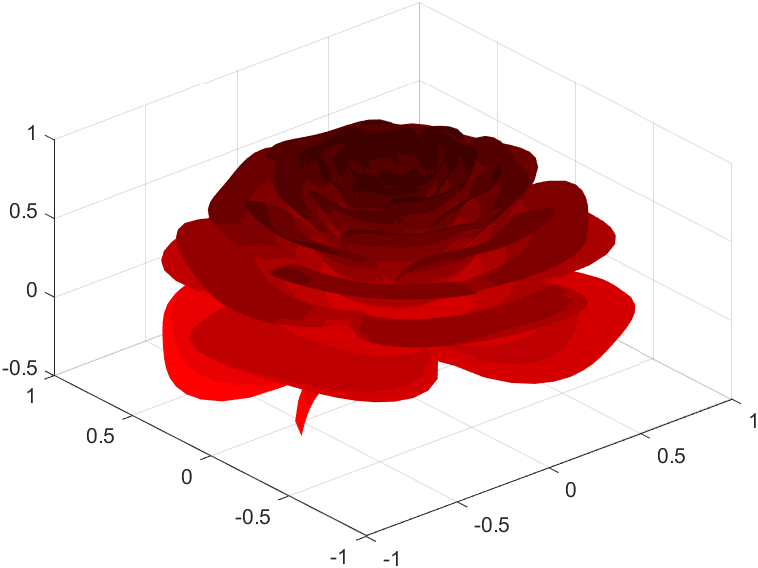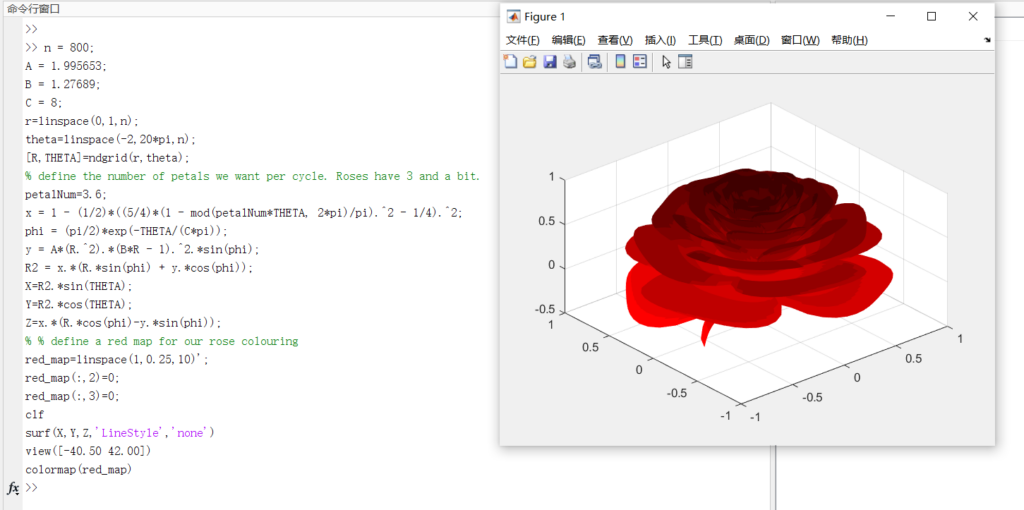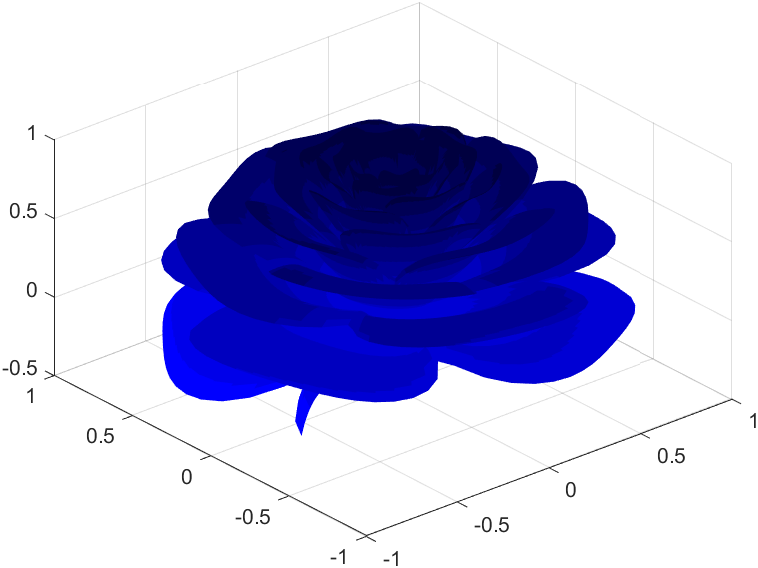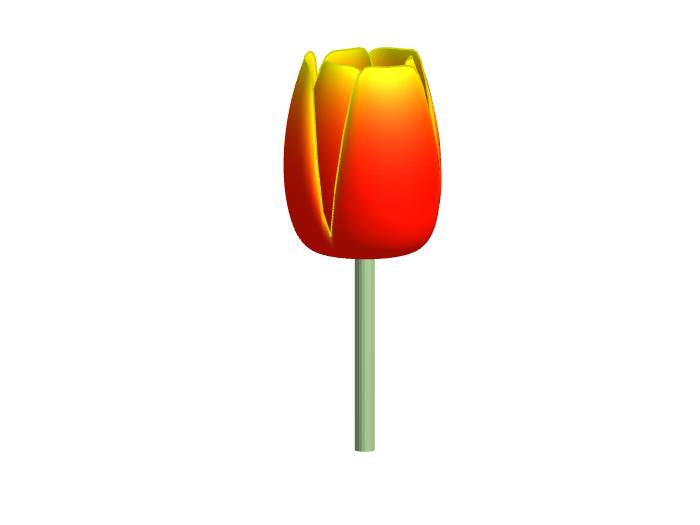Matlab的facebook官方账号给出了一段代码,运行代码可以画出一朵漂亮的红玫瑰。

n = 800;
—Matlab codes to plot a beautiful red rose. Credit: Matlab
A = 1.995653;
B = 1.27689;
C = 8;
r=linspace(0,1,n);
theta=linspace(-2,20pi,n);
[R,THETA]=ndgrid(r,theta);
% define the number of petals we want per cycle. Roses have 3 and a bit.
petalNum=3.6;
x = 1 – (1/2)((5/4)(1 – mod(petalNumTHETA, 2pi)/pi).^2 – 1/4).^2;
phi = (pi/2)exp(-THETA/(Cpi));
y = A(R.^2).(BR – 1).^2.sin(phi);
R2 = x.(R.sin(phi) + y.cos(phi));
X=R2.sin(THETA);
Y=R2.cos(THETA);
Z=x.(R.cos(phi)-y.*sin(phi));
% % define a red map for our rose colouring
red_map=linspace(1,0.25,10)’;
red_map(:,2)=0;
red_map(:,3)=0;
clf
surf(X,Y,Z,’LineStyle’,’none’)
view([-40.50 42.00])
colormap(red_map)
亲测有效~

改了几行代码,换了个颜色,换成了一朵蓝玫瑰。

P.S., 用Matlab画一支郁金香:
%% MATLAB Tulip
np = 3; % number of petals
n=np*20+1; % Theta resolution
theta=linspace(0, np*(1/np)*2,n);
r=linspace(0,1,80)';
newplot
for k=[0 1/np] % 2 layers of petals
x=1-(.8*(1-mod(np*(theta+k),2)).^3-.05).^2/2;
Z1=((x.*r).^6);
R2=x.*r*(1-k*.38);
R3=x.*(r.^8)*.4.*Z1;
X=R2.*cospi(theta)-R3.*cospi(theta);
Y=R2.*sinpi(theta)-R3.*sinpi(theta);
C=repmat(r,1,n).^25;
%% Petals
surface(X,Y,Z1*2,C,FaceColor="interp",EdgeColor="none",FaceLighting="gouraud");
line(X(end,:),Y(end,:),Z1(end,:)*2,Color="#cc0",LineWidth=1);
end
%% Stem
[CX,CY,CZ]=cylinder;
surface(CX*.1,CY*.1,(CZ-1)*2,[],FaceColor="#9b8",EdgeColor="none");
%% Decorate!
cmap=hot(200); % Colors of tulip
colormap(cmap(80:150,:)) % Extract subset of hot colormap.
axis off equal
view([0,10]);
material([.6 .9 .3 2 .5])
camlight(40,40)
